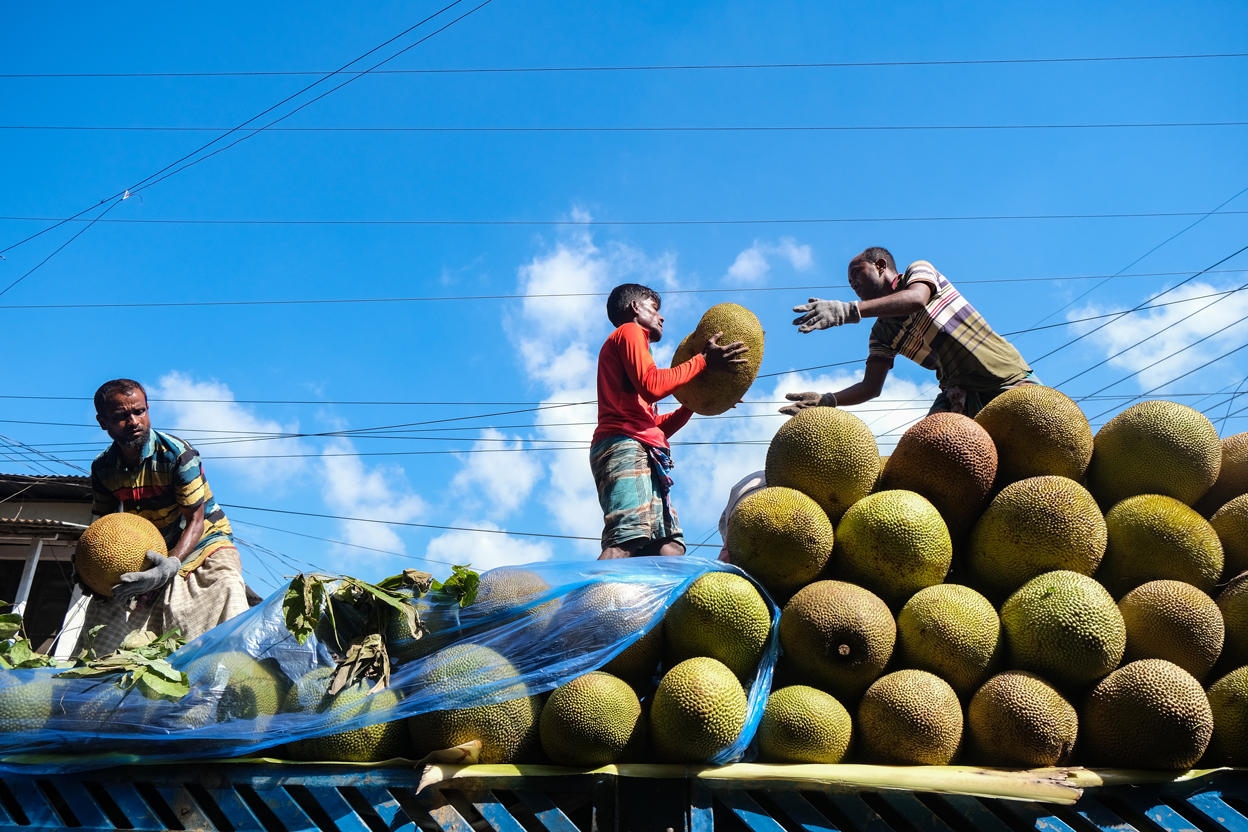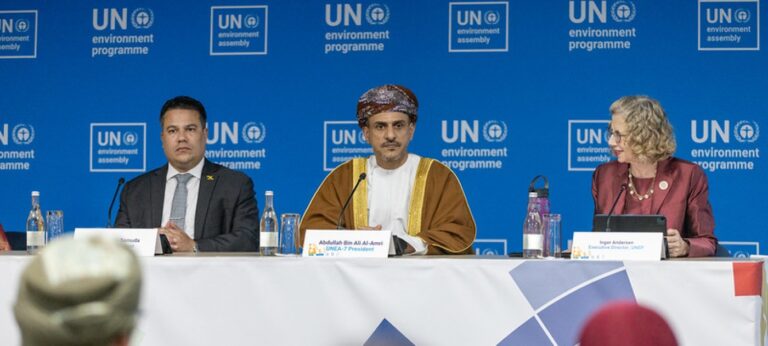
In Bangladesh, the jackfruit is reaching wider markets both at home and abroad, helping farmers and all those along the value chain improve their livelihoods. ©FAO/Kazi Riasat
Call it the jack of all fruits — and that is jackfruit for the Bangladeshis. After all, it is also the national fruit of Bangladesh!
Still, Khadiga Khanom never used to give much thought to jackfruit. In her home district of Gazipur, about 50 kilometres north of the Bangladeshi capital Dhaka, Khadiga had seen plenty of jackfruit trees. They are hard to miss, as oblong, spiky green fruits that can easily weigh several kilos. She had even cooked jackfruit in her curries along with an array of other ingredients. But she never imagined that one day it would become one of the main sources of her family’s livelihood.
It all came about after the 37-year-old homemaker took part in a series of workshops and trainings where she learned how to process a whole range of products that can be made from jackfruit.
With this training provided by the Food and Agriculture Organization of the United Nations (FAO), she soon decided to take a leap of faith and started her own business. Today, she produces an array of jackfruit-based goods, including pickles, jam, burgers, cakes, pizzas and even plant-based leather.
Processing about 100 kilograms of jackfruit daily, with five employees in a specially equipped room in her home, she’s able to earn an income of about USD 400 a month. She proudly shares that the money is “helping me support my family, and I’m even saving up to expand the business. I never thought jackfruit would change my life like this.”
The learnings were part of the FAO One Country One Priority Product (OCOP) initiative which helps countries identify the products that have the most market potential and provides support in maximising it.
For Bangladesh, the world’s second-largest producer of jackfruit, this was a natural choice. It is also the country’s national fruit and symbolizes abundance. Yet much of the potential of this fruit remained untapped.
Outdated subsistence farming methods and post-harvest losses due to poor storage have led to many jackfruit rotting before reaching markets.
For Ramij Uddin, a farmer in Sreepur Upazila in central Bangladesh, jackfruit has always been part of his life. But like many Bangladeshi farmers, who relied on traditional farming techniques, his yields were often inconsistent and low-quality.
It was in 2023 that Ramij participated in FAO’s training session and learned modern production techniques, including the proper use of manure, fertilizers and pest control. Thereafter, his results were impressive. By the next harvest season, his jackfruit trees produced 30 per cent more fruit. The size, shape and colour of the jackfruits had also improved significantly, allowing him to sell them at more than double the previous year’s price.
“I never imagined I could earn this much from jackfruit,” he says. “Now, I feel proud when I take my produce to the market because I know it’s the best quality. This training has completely changed how I farm.”
With modern production techniques, post-harvest handling and processing methods, Ramij and other farmers are seeing the results of the OCOP initiative. It’s not just about growing more jackfruit—it’s about growing better-quality jackfruit, which in turn means higher incomes and improved livelihoods.
Since Bangladesh joined the OCOP initiative in 2022, the FAO trainings have benefited not just farmers but all those involved in the process of jackfruit production. The focus has been on the “green” development of the jackfruit value chain, integrating climate-smart and environmentally friendly practices, and emphasizing innovation in production, storage, processing and marketing.
There’s still some way to go. For Bangladeshi jackfruit to enjoy increased market access, its production will require more modernization, like vacuum packaging, and adherence to international standards.
But already, with FAO’s support to maximise the jackfruit’s potential, local farmers and entrepreneurs are proving that it can open doors to better livelihoods. Local markets are now brimming with a variety of jackfruit products, from snacks to desserts, which not only cater to local tastes but also attract interest from broader international markets.
Source: FAO News And Media Office, Rome
– global bihari bureau





